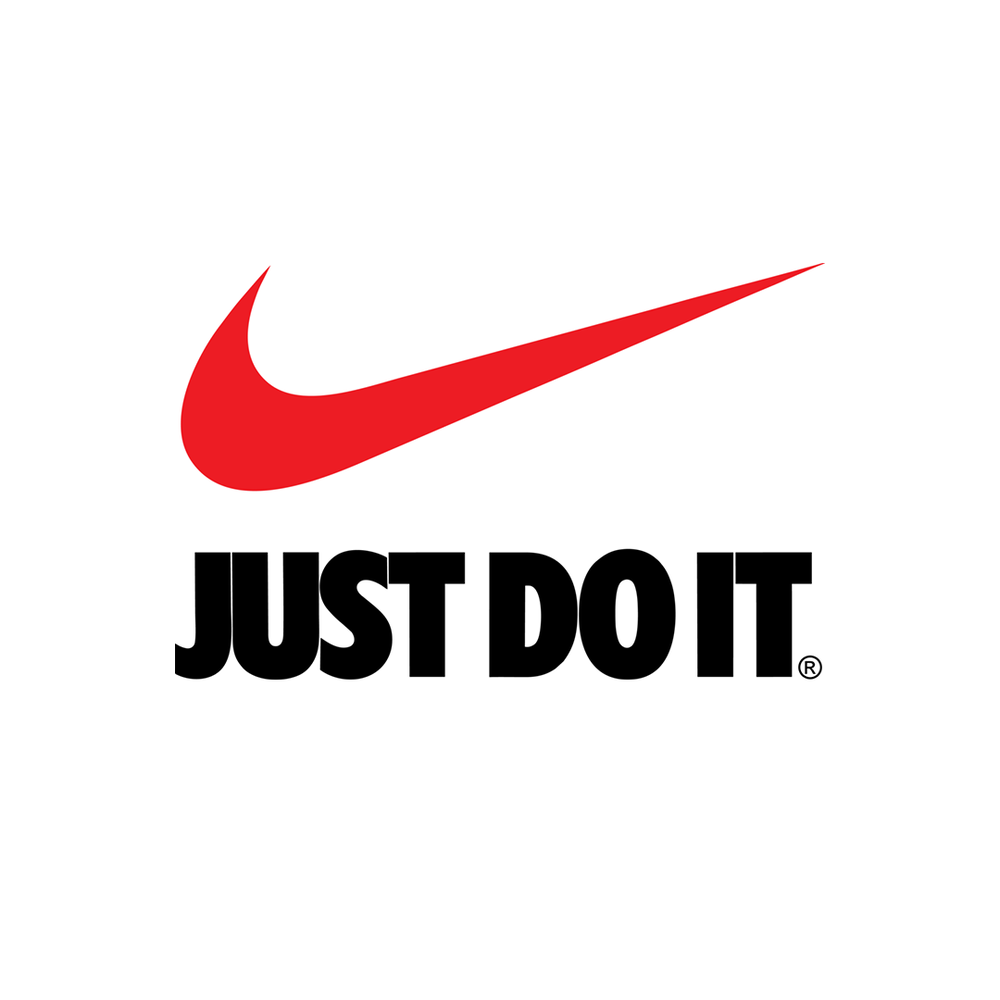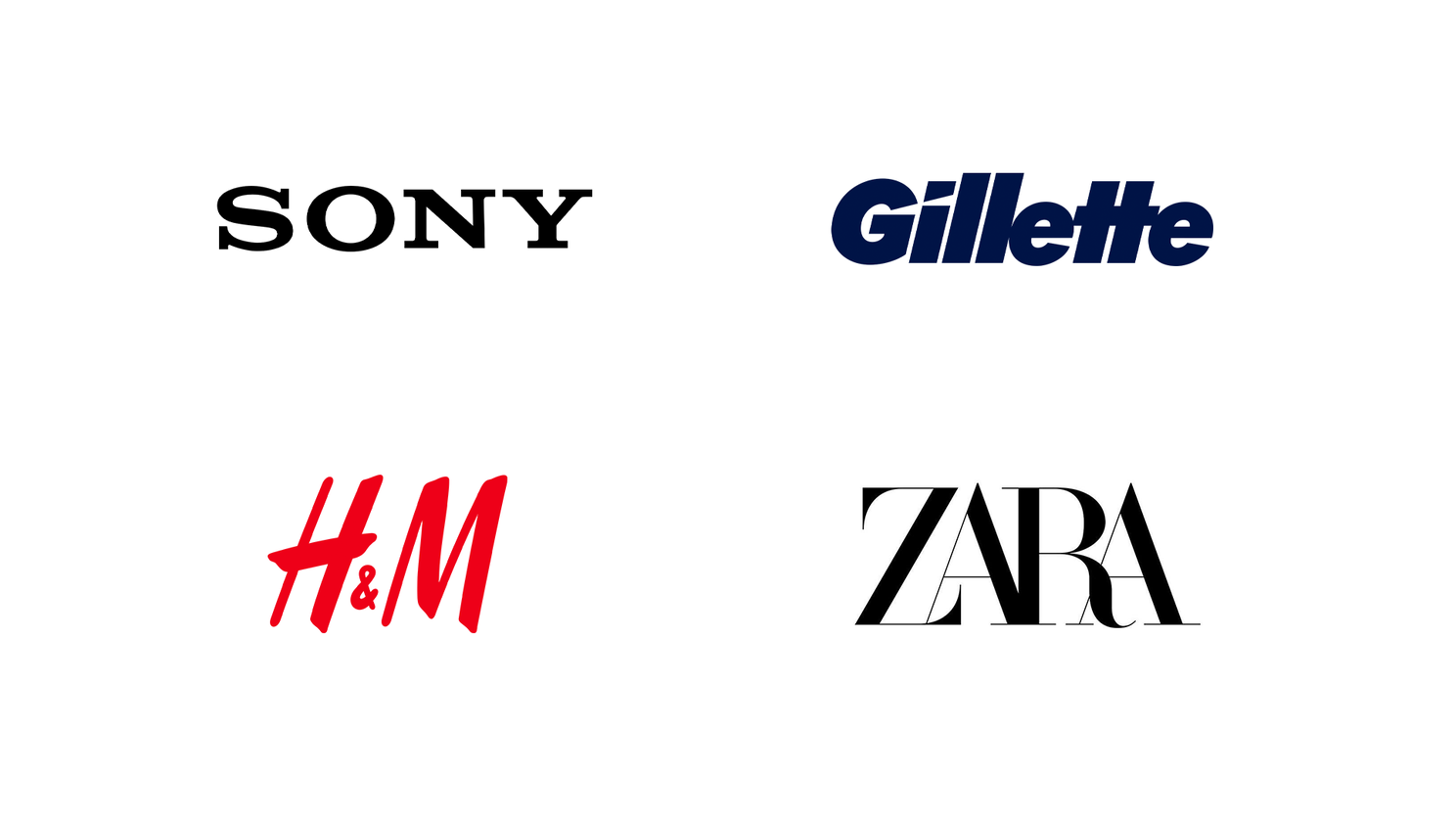building a cohesive corporate identity - consistency, culture, and connection | part 2
28/11/2024
Continuing from our previous exploration into the power of corporate identity, this article delves deeper into how brands evolve, the importance of internal branding, and the role of storytelling in creating emotional connections with your audience. We'll examine how adaptability, employee engagement, and compelling narratives enhance your brand's presence and ensure long-term success.
The Visual Foundation: Building Blocks of Identity
The Logo: Your Brand's Signature
Your logo is more than a pretty picture; it's the symbol of your brand's identity. It should be simple enough to be recognizable at a glance and versatile enough to work in various sizes and contexts.
Consider the Nike "Swoosh" — simple, timeless, and instantly recognizable. It perfectly represents the dynamic and athletic nature of the products Nike offers.

Color Palette: Evoking Emotion
Colors carry emotional weight and can influence how your brand is perceived. Establish primary and secondary colors that align with your brand's message. Coca-Cola is synonymous with red, symbolizing excitement and energy. But even they expanded their palette with black and green for different product lines.
Choose colors that fit your brand's personality. Bright neon colors might not suit an organic food company, while soft pastels may not align with a heavy metal band's image.
Typography: The Unspoken Voice
Typography often gets overlooked, but it's a crucial element of your corporate identity. The fonts you choose convey personality and can become iconic in their own right. For example, Coca-Cola's script is vintage yet timeless, giving it enduring appeal. Brands like Sony and H&M utilize typographic logos without additional icons, relying on the strength of their typography to convey their brand. A well-designed font can stand the test of time, so it's essential to choose typography that won't quickly become outdated.

The Power of Consistency and Flexibility
Setting the Rules: Brand Guidelines
Creating a brand book or style guide establishes how your brand elements should be used — logo placement, color usage, typography, and more. However, while guidelines are essential for consistency, they shouldn't be so rigid that they stifle creativity. Overly strict rules can lead to bland or forced designs. Trust that professional designers will interpret your guidelines thoughtfully, allowing your brand to shine in various contexts while maintaining consistency.
Trusting the Professionals
Investing in professional design is crucial. Your identity is often the first touchpoint with potential customers. A polished, professional appearance builds trust and sets you apart from the competition. It's tempting to cut corners, but remember that design is an investment in your brand's future.
Internal Branding: Employees as Brand Ambassadors
Aligning Culture with Identity
Your employees are the living embodiment of your brand's values and identity. Internal branding ensures that your team's behavior and attitudes align with your external promises. This alignment fosters authenticity, as customers can sense when a brand's culture genuinely reflects its stated values.
Emotional Connection Through Storytelling
The Art of Brand Storytelling
Storytelling is a powerful tool in branding; it goes beyond features and benefits, tapping into emotions and values that resonate deeply with audiences. By eliciting emotions, stories make your brand more relatable and memorable, creating emotional bonds with consumers. In a crowded market, a compelling story can set your brand apart, providing differentiation. Moreover, authentic stories build credibility and trust with consumers, enhancing your brand's reputation.
Example: Nike's Inspirational Campaigns
Nike doesn't just sell athletic wear; they sell inspiration. Through storytelling, they share narratives of perseverance, determination, and triumph. Campaigns like "Just Do It" have become cultural touchstones, motivating people to overcome obstacles and achieve their goals. This emotional connection fosters brand loyalty and elevates Nike beyond a mere product provider.
The Impact on Business Success
A strong corporate identity isn't just about aesthetics; it has real business implications:
Conclusion
Your corporate identity is more than a visual badge — it's a promise and a tool for building lasting relationships with your audience. By adapting to changes, aligning your internal culture, and embracing storytelling, you can build an emotional connection that stands the test of time. Authenticity and consistency are key to ensuring your brand not only attracts customers but keeps them coming back.
Remember, it's easier to sell something average that looks fantastic than something excellent that looks mediocre. Don't let a lackluster identity be the reason your exceptional product or service gets overlooked. Let your corporate identity be the beacon that guides consumers to your door.
The Visual Foundation: Building Blocks of Identity
The Logo: Your Brand's Signature
Your logo is more than a pretty picture; it's the symbol of your brand's identity. It should be simple enough to be recognizable at a glance and versatile enough to work in various sizes and contexts.
Consider the Nike "Swoosh" — simple, timeless, and instantly recognizable. It perfectly represents the dynamic and athletic nature of the products Nike offers.

Color Palette: Evoking Emotion
Colors carry emotional weight and can influence how your brand is perceived. Establish primary and secondary colors that align with your brand's message. Coca-Cola is synonymous with red, symbolizing excitement and energy. But even they expanded their palette with black and green for different product lines.
Choose colors that fit your brand's personality. Bright neon colors might not suit an organic food company, while soft pastels may not align with a heavy metal band's image.
Typography: The Unspoken Voice
Typography often gets overlooked, but it's a crucial element of your corporate identity. The fonts you choose convey personality and can become iconic in their own right. For example, Coca-Cola's script is vintage yet timeless, giving it enduring appeal. Brands like Sony and H&M utilize typographic logos without additional icons, relying on the strength of their typography to convey their brand. A well-designed font can stand the test of time, so it's essential to choose typography that won't quickly become outdated.

The Power of Consistency and Flexibility
Setting the Rules: Brand Guidelines
Creating a brand book or style guide establishes how your brand elements should be used — logo placement, color usage, typography, and more. However, while guidelines are essential for consistency, they shouldn't be so rigid that they stifle creativity. Overly strict rules can lead to bland or forced designs. Trust that professional designers will interpret your guidelines thoughtfully, allowing your brand to shine in various contexts while maintaining consistency.
Trusting the Professionals
Investing in professional design is crucial. Your identity is often the first touchpoint with potential customers. A polished, professional appearance builds trust and sets you apart from the competition. It's tempting to cut corners, but remember that design is an investment in your brand's future.
Internal Branding: Employees as Brand Ambassadors
Aligning Culture with Identity
Your employees are the living embodiment of your brand's values and identity. Internal branding ensures that your team's behavior and attitudes align with your external promises. This alignment fosters authenticity, as customers can sense when a brand's culture genuinely reflects its stated values.
- Employee Engagement: Engaged employees are more productive and provide better customer service.
- Brand Advocacy: When employees believe in the brand, they become enthusiastic ambassadors, promoting the company positively both inside and outside the workplace.
- Consistent Experience: Aligning internal culture with external identity ensures customers receive a consistent experience at every touchpoint.
Emotional Connection Through Storytelling
The Art of Brand Storytelling
Storytelling is a powerful tool in branding; it goes beyond features and benefits, tapping into emotions and values that resonate deeply with audiences. By eliciting emotions, stories make your brand more relatable and memorable, creating emotional bonds with consumers. In a crowded market, a compelling story can set your brand apart, providing differentiation. Moreover, authentic stories build credibility and trust with consumers, enhancing your brand's reputation.
Example: Nike's Inspirational Campaigns
Nike doesn't just sell athletic wear; they sell inspiration. Through storytelling, they share narratives of perseverance, determination, and triumph. Campaigns like "Just Do It" have become cultural touchstones, motivating people to overcome obstacles and achieve their goals. This emotional connection fosters brand loyalty and elevates Nike beyond a mere product provider.
The Impact on Business Success
A strong corporate identity isn't just about aesthetics; it has real business implications:
- Brand Recognition: Standing out in a crowded market.
- Trust and Credibility: Consistency builds confidence with consumers.
- Employee Pride: A strong identity fosters a sense of belonging and boosts morale.
- Premium Positioning: A professional identity can justify higher pricing.
- Customer Loyalty: Emotional connections lead to repeat business and advocacy.
Conclusion
Your corporate identity is more than a visual badge — it's a promise and a tool for building lasting relationships with your audience. By adapting to changes, aligning your internal culture, and embracing storytelling, you can build an emotional connection that stands the test of time. Authenticity and consistency are key to ensuring your brand not only attracts customers but keeps them coming back.
Remember, it's easier to sell something average that looks fantastic than something excellent that looks mediocre. Don't let a lackluster identity be the reason your exceptional product or service gets overlooked. Let your corporate identity be the beacon that guides consumers to your door.







